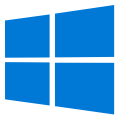e-CPS
Application mobile d'identification et d'accès aux Services Numériques
La Carte de Professionnel de Santé (CPS) est la carte d’identité professionnelle électronique du secteur de la santé :
Le socle technique vous est proposé à des fins de développement d'applications intégrant les fonctionnalités de sécurité de la CPS. Il vous permet d'intégrer et de valider dans les applications, sous divers systèmes d'exploitation (Microsoft Windows, Apple Mac OS X, Linux) :
1556950 cartes actives de la famille CPx
830023 Cartes de Professionnel de Santé (CPS) actives
48577 Cartes de Personnel en Formation (CPF) actives

Note: Dans la partie 3.1 "Usage des CPS de test", décrivez les usages prévus pour votre projet et les cartes de test commandées.

Le Minidriver est la nouvelle génération des pilotes de périphérique pour les systèmes Microsoft, notamment pour les cartes à puce.
Il offre l'utilisation des 2 volets de la carte CPS3 : le volet contact et le volet sans-contact (conformes au standard IAS-ECC).
Important : l'installation de la Cryptolib CPS est prioritaire sur celle du Minidriver CPS afin de garantir une compatibilité avec l'existant.
L'application CPS Gestion permet d'utiliser la carte CPS en complément du Minidriver

Le Token driver s'installe en même temps que l'application CPS Gestion.
L'installation du Token driver est nécessaire pour l'authentification par carte CPS dans un navigateur autre que Firefox.
Le Token driver et la Cryptolib CPS cohabitent sans problème, et peuvent tous deux être installés sur un poste macOS.

Il n’existe pas encore de driver, vous pouvez déployer la Cryptolib.
La Cryptolib CPS est un composant logiciel qui permet de relier la carte CPS et des applications informatiques dédiées à la gestion de cabinet ou d’officine.
La Cryptolib est essentielle pour exploiter toutes les possibilités de la carte CPS, comme l’authentification en ligne sur les services de l’Assurance Maladie, la signature électronique, ou la fonction sans contact.
La Cryptolib doit être installée sur votre poste de travail pour utiliser la carte CPS.
L’ANS répond aux questions les plus fréquemment posées sur la carte CPS et le socle technique
Afin de garantir la compatibilité avec les nouvelles cartes CPx4, une mise à jour de la Cryptolib en version 5.2 minimum est requise.
Par ailleurs, pour l’usage sans contact, les lecteurs doivent être compatibles avec le protocole MIFARE DESFire EV3.
À noter :
Pour vous accompagner, consultez le guide « Je mets à jour ma Cryptolib ».
Cette réponse vous a-t-elle été utile ?
La carte CPx contient un volet DESFire sans-contact qui peut être utilisé pour cet usage.
Cette réponse vous a-t-elle été utile ?
La Cryptolib CPS est un composant logiciel qui permet de relier la carte CPS et des applications informatiques dédiées à la gestion de cabinet ou d’officine. Elle est essentielle pour exploiter toutes les possibilités de la carte CPS, comme l’authentification sur les services de l’assurance maladie, la signature électronique et la fonction sans contact.
Vous pouvez vous rendre sur ce lien pour télécharger la Cryptolib : https://industriels.esante.gouv.fr/produits-et-services/socle-technique-cps/cryptolib-cps-version-5
Cette réponse vous a-t-elle été utile ?